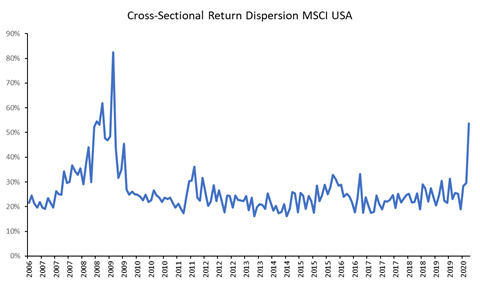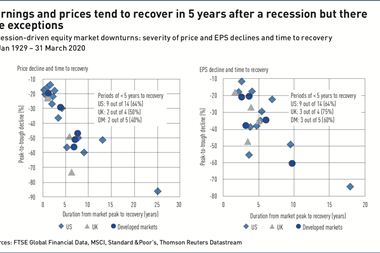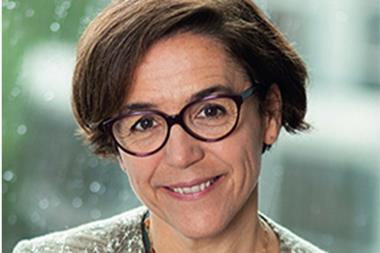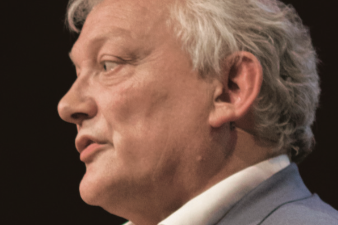What are the facts that we know and that we can rely on when thinking about portfolio construction?
The COVID-19 and oil price-related market shock seems to have levelled out – though this may only be the first of such experiences – on the back of massive central bank and fiscal policy interventions.
It is time for many investors to, firstly, review the behaviour of their portfolios during the intense sell-off and the subsequent surprisingly strong rebound, and, secondly, to assess how their current portfolio fits within the market environment they anticipate for the months to come.
This said, how realistic is the expectation of having a clear and concrete picture of the true economic impact of the coronavirus crisis? After all, the future evolution of the virus spread is, itself, completely unclear.
On that basis, how can investors know what even central banks and governments do not: how economies and financial markets can become independent of more than a decade of anaesthesia of monetary and fiscal policies, and their subsequent consequences for asset prices?
The economist John K. Galbraith’s view that: “There are two kinds of forecasters: those who don’t know, and those who don’t know they don’t know”, is now more pertinent than ever.
What are the facts that we know and that we can rely on when thinking about portfolio construction? One thing we know is that, over the last few years – even before the coronavirus/oil price crisis, the market environment had changed significantly.
In particular, via the mechanics of market cap or outstanding debt weighted indices – which are very dynamic and, at times, extreme risk allocators – there is a clear trend of a majority of investors having become exposed to higher market risk concentration in singular risk factors, such as oil or other specific sectors, or even a few idiosyncratic security risks.
There are two important observations from the recent market crash highlighted in Figures 1 and 2: a strong increase in correlations of asset returns, along with a higher commonality amongst risk drivers; and a sudden and massive increase in the cross-sectional return dispersion.
Figure 1

Both phenomena are well-known symptoms of deep market crises triggered by a small amount of very large external shocks. What is particularly notable about the recent market slump, however, was its instantaneity and that it very exactly hit some of the risk factors that have become so dominant in recent years.
Corporate bond markets slumped and liquidity dried out excessively as a result of the crash in oil price. Passively invested portfolios were especially hit as a result, as these were excessively exposed to an energy sector that was in freefall.
Figure 2

Economic uncertainty, due to the lockdowns of almost all major economies, caused a mass selloff of assets across the board by investors, which itself was an equally important and massive shock which made asset prices correlate more strongly.
Certain sectors were particularly punished, however, with equity markets seeing excessive selloffs in Consumer Services, Financials and Industrials. The latter sectors – Financials and Industrials – had previously been important risk exposures of many standard benchmark indices; as a result, many investors were significantly exposed to these more than any other sources of risk.
The high asset price dispersion meant that you would have been extremely lucky and far better off in making just the right one out of 1,000 bet. However, for most investors, making such a big bet may have meant a loss that would probably have been in excess of what a portfolio has earned in this market environment that did not put all eggs in one basket but diversified well the risk exposures of any given portfolio.
Yet, even in the strong rebound of the recent weeks, we notice that it has not been easy to capture the full market premium in an environment still largely affected by a high dispersion in asset prices.
While some stocks have rebounded extremely strongly, others have been clear laggards. Once again, it would have been easier to bet on a horse race than to try to forecast the market rebound.
Indeed, only by balancing out risk exposures, rather than concentrating its weight in a select few risk factors or stocks, could a portfolio come close to capturing the full market premium from the rebound.
So, what comes next? Will, as a second phase of the market slump, signs of a massive consumer crisis become non negligible and be priced into sectors or stocks that have seemed almost invulnerable so far?
Will a second (or, indeed, third) wave of virus infections send us all back into a lockdown with almost unquantifiable further economic consequences? And for how long can central banks and governments credibly continue to play the white knight?

All that we know at this point is that we know nothing for certain. The best answer to such uncertainty and a future that we cannot forecast is, most likely, the principle of diversification.
Looking back, a well-diversified portfolio would have prevented investors from being overly exposed to the oil price shock and the massive sector sell-off, while allowing the average investor to take advantage of the true market risk premium in an environment of highly dispersed asset prices.
While the art of constructing of a truly diversified portfolio would be worthwhile an article by itself, there is no uncertainty that these basic laws of portfolio construction will continue to be applicable and deliver the true market premium to investors.
Dr. Tatjana Puhan is deputy-CIO of TOBAM. She leads investment teams and contribute to the development of TOBAM’s established Maximum Diversification strategies across equities, multi-asset and fixed income asset classes.































No comments yet